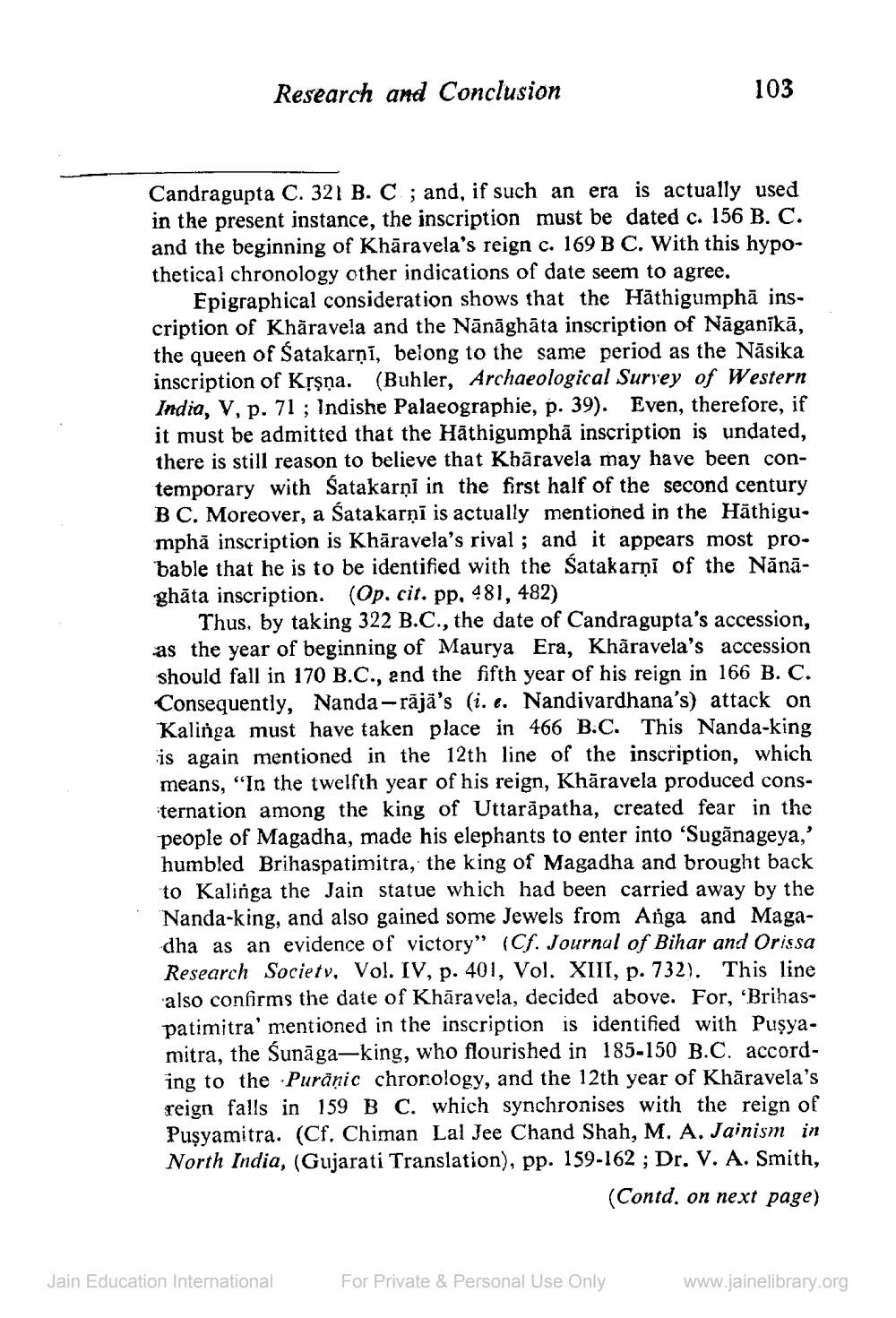________________
Research and Conclusion
103
Candragupta C. 321 B. C.; and, if such an era is actually used in the present instance, the inscription must be dated c. 156 B. C. and the beginning of Khāravela's reign c. 169 B C. With this hypothetical chronology other indications of date seem to agree.
Epigraphical consideration shows that the Hāthigumphā inscription of Khäravela and the Nānāghāta inscription of Nāganikā, the queen of Satakarni, belong to the same period as the Nāsika inscription of Krşņa. (Buhler, Archaeological Survey of Western India, V, p. 71 ; Indishe Palaeographie, p. 39). Even, therefore, if it must be admitted that the Hāthigumphă inscription is undated, there is still reason to believe that Khāravela may have been contemporary with Satakarni in the first half of the second century BC. Moreover, a Satakarņi is actually mentioned in the Häthigumphā inscription is Khāravela's rival ; and it appears most probable that he is to be identified with the Satakarņi of the Nānāghāta inscription. (Op. cit. pp, 481, 482)
Thus, by taking 322 B.C., the date of Candragupta's accession, as the year of beginning of Maurya Era, Khāravela's accession should fall in 170 B.C., and the fifth year of his reign in 166 B. C. Consequently, Nanda-răjä's (i. e. Nandivardhana's) attack on Kalinga must have taken place in 466 B.C. This Nanda-king is again mentioned in the 12th line of the inscription, which means, "In the twelfth year of his reign, Khāravela produced consternation among the king of Uttarāpatha, created fear in the people of Magadha, made his elephants to enter into 'Sugāna geya,' humbled Brihaspatimitra, the king of Magadha and brought back to Kalinga the Jain statue which had been carried away by the Nanda-king, and also gained some Jewels from Anga and Magadha as an evidence of victory” (Cf. Journal of Bihar and Orissa Research Society, Vol. IV, p. 401, Vol. XIII, p. 732). This line also confirms the date of Khāravela, decided above. For, ‘Brihaspatimitra' mentioned in the inscription is identified with Pusy mitra, the Sunāga-king, who flourished in 185-150 B.C. according to the Purāņic chronology, and the 12th year of Khāravela's reign falls in 159 B C. which synchronises with the reign of Puşyamitra. (Cf. Chiman Lal Jee Chand Shah, M. A. Jainism in North India, (Gujarati Translation), pp. 159-162 ; Dr. V. A. Smith,
(Contd. on next page)
Jain Education International
For Private & Personal Use Only
www.jainelibrary.org




